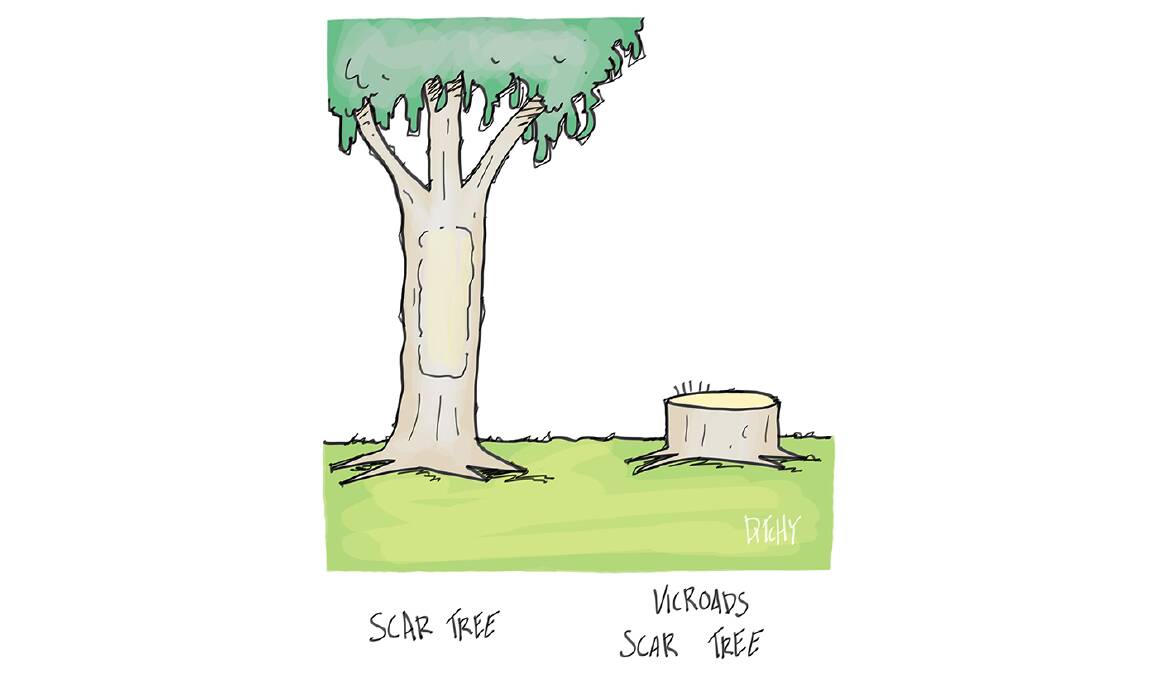
Aboriginal community members have resolved to continue their fight to prevent trees in the path of the Western Highway duplication from being cut down.
Subscribe now for unlimited access.
or signup to continue reading
Elder Ted Lovett and indigenous women disputed Aboriginal Victoria’s ruling that there was no culturally significant trees in the area.
Mr Lovett said any Aboriginal elder would see at least five scar trees in the area near Buangor.
Three women have also said there are birthing trees in the area.
“I have been up there, I have seen them, I have actually seen the trees,” Mr Lovett said
“There are about five scar trees – I am an elder, but I was not involved in any discussions about these trees.”
Martang is the registered Aboriginal part for the area and provided advice on the trees to Aboriginal Victoria.
Mr Lovett, who is a Wendouree resident, said Martang was wrong to determine there were no culturally significant trees.
Multiple attempts were made to call Martang but the group did not respond before The Courier’s deadline.
An Aboriginal Victoria spokesperson said it consulted with senior Djab Wurrung women, the traditional owners of the land, to determine the possible cultural significance of trees.
“The birthing trees at Buangor were assessed by Aboriginal Victoria under a Cultural Heritage Management Plan, approved by the Registered Aboriginal Party, Martang Inc,” they said.
”Aboriginal Victoria determined that the trees do not have any cultural heritage significance and are not Aboriginal Places.”
One of the three women who believe there are birthing trees, Gillian Trebilcock said an Aboriginal archaeologist and senior woman had confirmed the trees’ significance.
“Archaeologists have looked at the tree and said it has obviously been hewn by people,” she said.
“We have now escalated this and taken it to the Aboriginal Heritage Council of Victoria.”
The council is an independent statutory body appointed by the government.













